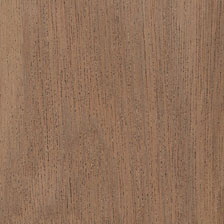Sipo

Other names
Utile,Asseng-Assie
Scientific Name
Entandrophragma utile
Family
Meliaceae
Description
The heartwood matures from a pink-brown when fresh cut to deep red-brown. The grain is interlocked to rather irregular, producing a wide irregular striped figure on quartered surfaces. The wood has a faint cedar-like smell. It is extremely resistant to preservative treatment and resistant to decay.
Density
(H=12%) : 0,61
Treatability
Not permeable
Seasoning
It air dries rather slowly, and may be liable to splitting and distortion.
Stability
Moderately stable
Durability
Moderately durable.
Workability
The wood saws and works fairly easily with both hand and machine tools, with only slight blunting effects on cutting edges. In planing and moulding operations, a 15–20° cutting angle is recommended to avoid picking up of grain. Finishing usually gives good results, with a nice polish, but the use of a filler may be needed. The wood is not liable to splitting in nailing and screwing, with good holding properties. The gluing, staining and polishing properties are satisfactory, but the steam bending properties are poor. A tendency of charring is present in drilling operations. The wood is suitable for veneer production.
End-Uses
- Sliced veneer
- Current furniture or furniture components
- Cabinetwork (high class furniture)
- Exterior joinery
- Interior joinery
- Interior panelling
- Veneer for back or face of plywood
- Moulding
- Embarcations légères
- Flooring
- Stairs (inside)
- Volets roulants
- Light carpentry
- Glued laminated
Remarques : Good substitut for African Mahogany
Download the complete data sheet